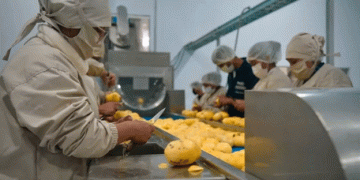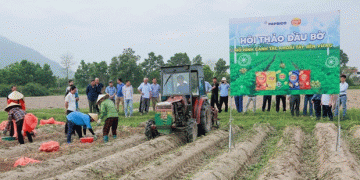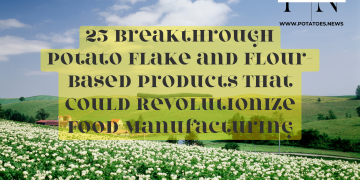Tags: #PotatoProduction #AgriculturalOptimization #FoodProcessing #ChinaAgriculture #PotatoBasedProducts #EconomicImpact #SocialSignificance
Description: The article explores the development and consequences of potato production in China, focusing on the optimization of agricultural structure and the expected increase in agricultural costs. It discusses the current production volume, consumption patterns, and the government’s strategy to promote potato-based food products. The article also highlights the technological breakthroughs and challenges in potato processing and the economic and social significance of developing potato-based food products.
China’s Potato Production and the Optimization of Agricultural Structure
China is a major producer of potatoes, with a significant production volume that surpasses consumption demands. In 2013, global potato production reached 376 million metric tons, out of which China accounted for 96 million metric tons, making it the world’s leading producer. However, potato consumption per capita in China is only 42 kg, with only half of it originating from China itself. In contrast, in Europe and the United States, potatoes are primarily grown for processing, with processed products accounting for nearly 70% of the total production volume. China still predominantly consumes fresh potatoes, with processed products constituting less than 10% of the total output.
Development Strategy and Health Benefits
In 2015, China initiated a development strategy for major potato products, aiming to promote public consumption of nutritious and healthy potato-based food products while actively expanding the market. Zhang Hong, an expert in the field, emphasized that potatoes are whole and vegetable foods, rich in nutrients, low in calories, and high in quality protein. This strategic focus contributes to optimizing agricultural cropping structures, addressing resource and environmental constraints, leading agricultural modernization, transforming agricultural growth patterns, and accelerating the development of modern agricultural crops. It promotes the integration of various aspects of agriculture.
Technological Breakthroughs and Processing Challenges
The potato-based food industry in China faces significant challenges, including the lack of a unified consumption channel, food product shortages, slow processing speed, and low consumption per capita. However, Zhang Hong believes that technological innovations in processing equipment and technologies for potato-based food products can overcome these challenges and play a crucial role in industrial transformation and modernization. Several research institutes and enterprises have already developed over 200 types of potato-based products, including potato noodles, rice, pancakes, and mooncakes. Integrated bionic rolling machines and industrial production lines have been established to support the processing of these products.
Economic and Social Impact
The production of potato-based food products holds important economic and social significance, with promising prospects. According to the Ministry of Agriculture’s plan, China’s total potato production reached 130 million metric tons in 2020, of which 30% is used for processing major food products. By 2025, the production is expected to increase to 220 million metric tons, with approximately 100 million metric tons allocated for processing major food products. This development could generate added value exceeding 300 billion yuan. Additionally, the strategy benefits farmers, as an increase of 300 yuan per acre in subsidies for potato cultivation is expected to raise farmers’ net profits by 45 billion yuan.
While the future holds broad prospects, Zhang Hong acknowledges that the high cost of processing major potato products remains a challenge that needs to be addressed. He emphasizes the importance of advanced processing equipment and technology advancements, which will greatly contribute to the industrial development of potato-based food products in China.






